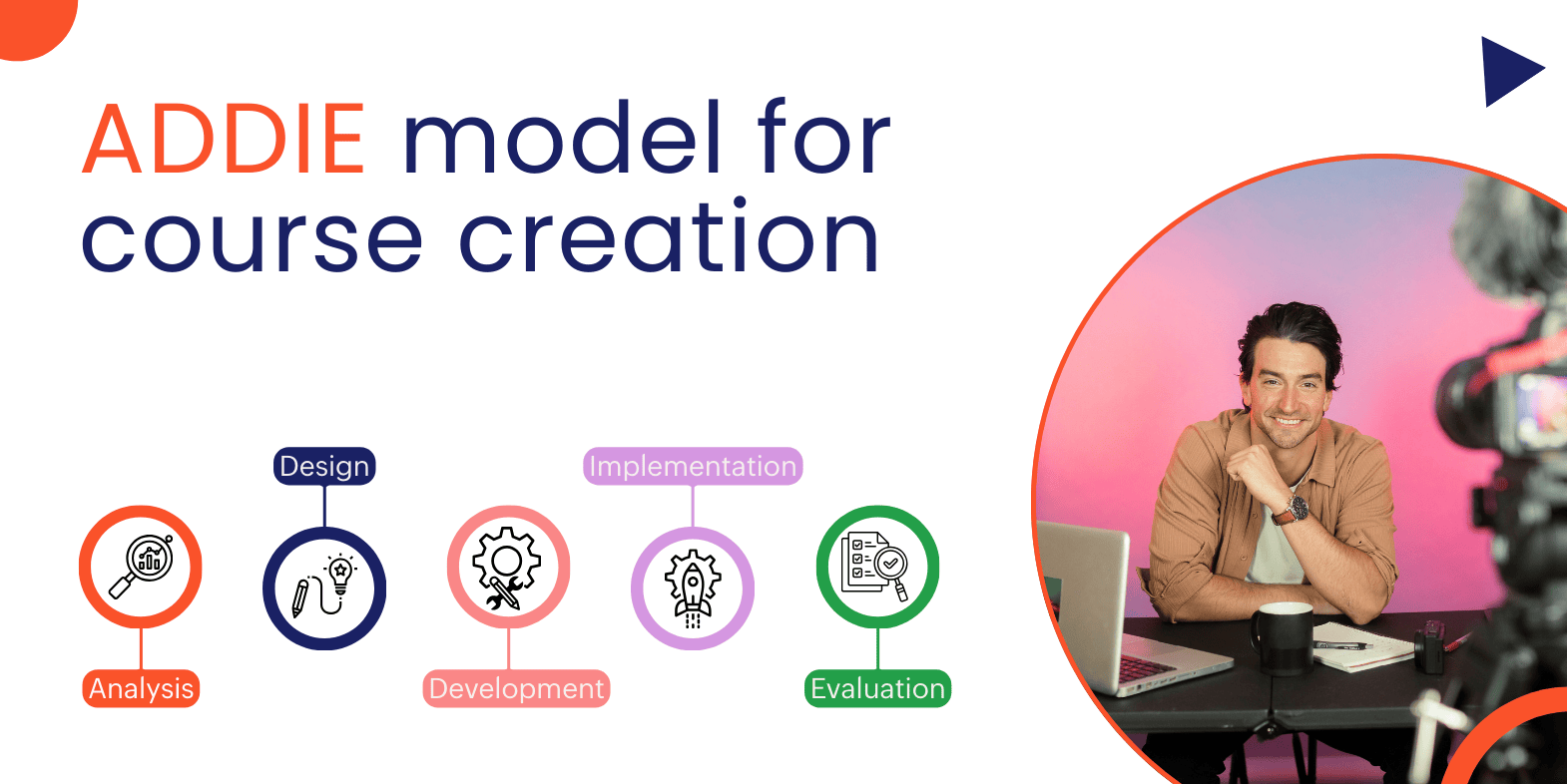- HOME
- E-Learning trends
- Beyond bullet points: Creative training materials to boost employee engagement
Beyond bullet points: Creative training materials to boost employee engagement
- Last Updated : August 13, 2024
- 789 Views
- 7 Min Read

Training your employees with the right set of skills is needed for an organization's growth. It's not just crossing items on the to-do list, but an investment in your business's future, a commitment to nurturing talent, and a catalyst for growth.
Even though it's a cliche, the fact is that change is the only constant that can't be ignored. So, as an organization, you must equip your workforce with the knowledge and skills they need to thrive. That's where employee training materials come into play.
Imagine bringing a new employee onto your team. They bring enthusiasm and potential, but they also need guidance to hit the ground running. Without proper onboarding, they could feel lost, overwhelmed, or even disengaged.
However, with the proper training material, onboarding can be streamlined, providing employees with the guidance they require. And onboarding is just one aspect where employee training materials can be used.
What are employee training materials?
Employee training materials are diverse resources designed to facilitate learning and development within an organization. These materials can be an online course, manual, presentation, video, or even a simulation. Each element is crafted to impart knowledge, foster skill acquisition, and promote a culture of continuous improvement.
The importance of having employee training materials
Here are a few benefits of having employee training materials for your organization.
1. Knowledge consistency and accuracy
Employee training materials are a repository of your organization knowledge, ensuring consistency and accuracy in training delivery. By providing standardized resources, you can streamline your training process and minimize discrepancies in knowledge transfer.
2. Enhanced employee confidence and competence
Structured training materials make it possible to empower employees to handle their roles confidently and competently. Equipping them with the right knowledge and skills can increase their job satisfaction, bring down turnover rates, and inspire continuous improvement within the organization.
3. A culture of innovation
By keeping your employees updated on industry trends and best practices, you can spur creativity, experimentation, and gain an edge over your competitors. This will further lead to an innovative and adaptive work culture.
4. Alignment of individual and organizational goals
By clearly defining expectations and skill requirements, you can ensure that your employees are equipped to contribute to shared goals, maximizing productivity and efficiency.
5. Improved performance and productivity
Employee training materials can be used to train various departments of your organization. Whether it's mastering new technologies, honing customer service skills, or educating your sales team, these materials can help boost the overall productivity of your business.
6. Reduction in training costs and time
By providing self-paced learning resources and reusable training modules, organizations can minimize the cost of instructor-led sessions and provide employees with the flexibility to access the courses at their preferred time.
7. Enhanced employee engagement and retention
Upskilling your workforce with proper training material promotes engagement and retention. By investing in the growth and development of your employees, you can evoke a feeling of loyalty and commitment among them, bringing down the turnover rates.
Types of employee training materials
There are various types of employee training materials that cater to different learning styles and organizational needs. Here are a few:
Online courses
An online course is a digital learning program delivered through platforms like Learning Management Systems (LMS) or online employee training platforms. You can create a series of modules or lessons with different multimedia resources, such as interactive elements, assessments, and assignments.
Use cases: Online courses are one of the most popular means for organizations to offer flexible and scalable training solutions to their workforce. They can range from technical skills to soft skills, compliance training, sales training, partner, and customer training, or leadership development. Your employees can learn at their own pace, anytime, and anywhere, making it ideal for remote or hybrid teams.
Manuals and guides
These are the detailed written instructions, procedures, SOPs, or guidelines for every task in an organization. They’re mostly presented in the form of diagrams and illustrations to help the user understand the concepts.
Use cases: Manuals and guides are typically used as readily accessible materials to understand the do's and don'ts of important tasks. They may also serve as references during continued training, helping to refresh a learner's memory.
Presentations
Presentations are visual aids that convey information through slides, graphics, and other multimedia elements. They’re designed to engage audiences while effectively communicating vital concepts, even those that might otherwise be considered mundane.
Use cases: Presentations can be used in training sessions, workshops, and meetings to deliver educational content, facilitate discussions, or share updates and insights. They excel at conveying complex information in a structured manner.
Simulations and case studies
The simulation and case studies are interactive learning experiences, where real-life situations and issues that employees might encounter are replicated in a controlled learning environment. They encourage employees to apply theoretical knowledge and problem-solving skills to enhance their critical thinking and decision-making abilities.
Use cases: Simulations and case studies are commonly used for upskilling, reskilling, and delivering scenario-based training. They provide employees with opportunities for experiential learning, allowing them to explore various strategies, test hypotheses, and learn from their mistakes within a simulated environment.
Job aids and checklists
These concise materials are designed for daily use, providing instant access to vital information, procedures, or steps necessary for executing specific tasks or processes. They’re intended to guide employees in their day-to-day responsibilities and enhance their efficiency.
Use cases: Job aids and checklists serve as invaluable resources for on-the-job training, performance support, and quality assurance. They assist employees in minimizing manual errors and ensuring consistency in task execution.
How to create engaging employee training materials
Here are effective strategies for crafting engaging employee training materials that foster comprehension and retention.
Identify learning objectives
Start by clearly defining the specific goals and learning outcomes that you want your employees to achieve through your training materials. These objectives should align with the overall objectives of the training program and address the needs of both your employees and the organization
Use the SMART criteria of performance targets to ensure that your learning objectives are well-defined and actionable.
Visit our blog to learn how to create a course outline.
For example, if your training is for customer service representatives, your learning objectives might include being proficient in communication techniques, handling customer complaints effectively, and upselling products or services.
Choose engaging formats
Experiment with a variety of creative formats and media types that make your training materials interesting. This includes the use of multimedia resources such as videos, animations, interactive modules, and quizzes, among others.

There are several online training platforms, such as TrainerCentral, offering plenty of features to make your training materials effective and engaging. These platforms usually offer templates, digital libraries, and assessment makers that make the process of creating interactive and engaging content easy.
Tell a compelling story
Turn your training content into a narrative or a storyline to grasp learners' attention and to create context and relevance. Use different techniques of storytelling like analogies and anecdotes to describe concepts and convey messages and emotions effectively to your audience.
You can also create interactive storytelling experiences, like branching scenarios and scenario-based simulations. This will help your employees make choices and observe their effects in a realistic and controlled scenario.
Incorporate interactivity
Include interactive features such as quizzes, polls, surveys, discussion rooms, and team-based activities to make the learning experience participative and hands-on. This will help even the complex concepts to stick to your learners' memory and help in retaining the knowledge.
Focus on visual design
Get creative with the visual design of your training materials, including layout, typography, color scheme, and imagery. This should be used to help learners better understand the content, focus on key aspects of the message, and maintain interest in the training.
For example, you can differentiate content using color coding, establish a visual hierarchy, or create infographics to present complex concepts in an easy-to-understand format. Use free tools such as Canva to create and design your training materials.
Keep it bite-sized
Break your training materials up into smaller chunks, or modules, to make it easier for the learner to digest and retain. Learners may be overwhelmed if you pile a lot of information on them all at once. Instead, you can present the content in manageable increments.
Micro-learning modules are short, focused learning activities that can be completed in a few minutes. This is particularly effective for delivering just-in-time training and addressing specific learning objectives or performance gaps.
Foster collaboration
You can encourage interaction and collaboration among your employees by providing discussion forums, group activities, and peer-to-peer feedback mechanisms as part of their training module. This will help ensure knowledge transfer, promote social learning, and build a sense of community among learners.
Hosting live workshops occasionally allows you to divide employees into groups based on various criteria. During these workshops, you can conduct group discussions, where they can share their opinions on case studies and trends.
Provide clear navigation and accessibility
Design your training materials with a focus on user-friendly navigation. Clear instructions should guide learners seamlessly through the content, which should be organized sequentially for easy comprehension. Implement navigation options for quick access to relevant materials.
Use tools such as drip scheduling and course compliance to structure a clear learning path, ensuring that learners understand where to begin and how to progress through the material effectively.
Test and iterate
Before full implementation, pilot-test your training materials with a small group of employees or your L&D team. Gather feedback to identify areas for improvement and refine your teaching methods accordingly, taking into consideration factors such as learners' needs, preferences, and preferred learning styles.
Incorporate assessments and assignments as part of your training program to evaluate learners' understanding of the concepts taught. This provides valuable insights into the effectiveness of your teaching methods and helps identify areas that may require adjustment.
Wrapping up
The importance of investing in comprehensive and engaging training materials cannot be underestimated in the modern workforce. These are invaluable tools for equipping your workforce with the knowledge, skills, and confidence that they need to thrive in business.



